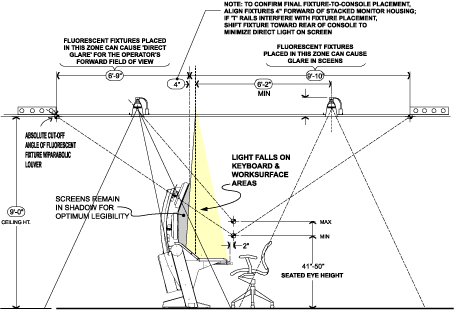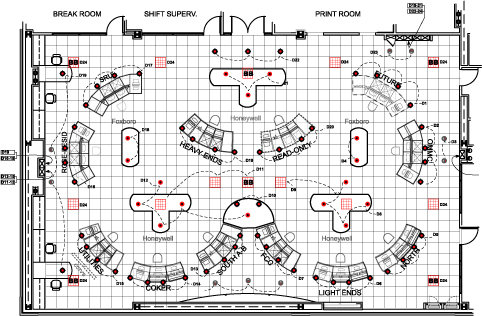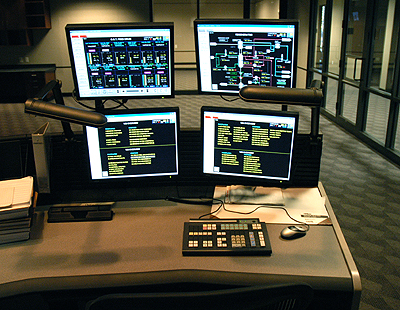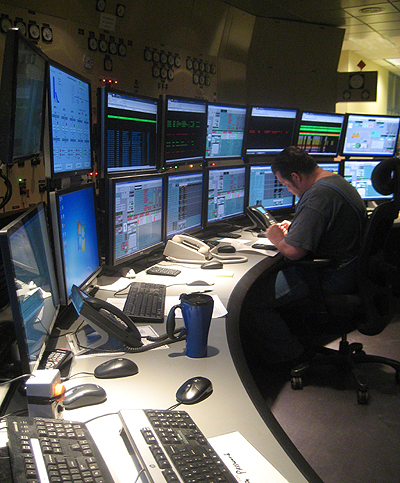|

LIGHTING
DESIGN: the real success of a well-designed control building rests on attention to details, such as the design and
installation of lighting and interior finishes. Lighting at the consoles should be arranged to eliminate glare and reflections
in the VDU screens.

Each
operator should have independent control over the illumination level for his console. CRD prepares a detailed 'glare
& reflection study' based upon the particular console type specified, as a basis for final light fixture placement and
dimming, as shown above, in the lighting plan for Valero's Texas City refinery.

Certain
console manufacturers, like Evans, offer task lighting to further supplement the overhead lighting (in situations where ceiling
fixtures cannot be perfectly located). In all cases, however, it is important to: eliminate all reflections on the screens
by NOT positioning overhead luminaires behind the consoles; avoid forward-looking 'direct glare' produced by flat diffusers
on fluorescent fixtures; provide capability of dimming down to levels approximately 150 to 350 lux (15-35 ft. candles) for
periods of monitoring or during normal operation.
|

With flat-screen based consoles, such
as these for Dominion Power, CRD developed lighting that precisely illuminated the worksurfaces, yet allows the screens to
fall in semi-shade/shadow. It is key to provide dimmer controls for each Operator so they have the ability to
adjust lighting levels.
|